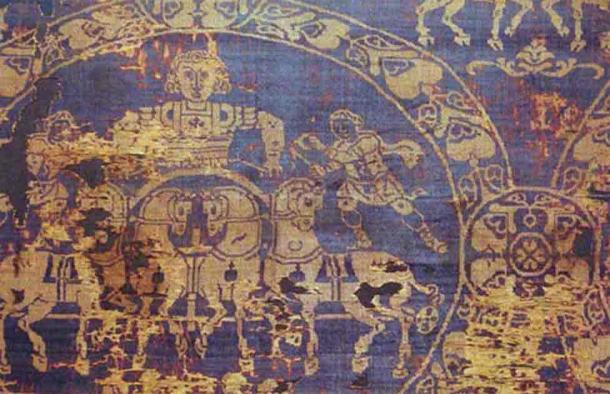In an extraordinary archaeological find at Carlisle, UK, researchers have unearthed what appears to be Tyrian Purple, a rare and historically significant pigment once reserved for the highest echelons of Roman society. The discovery was made within the drainage system of a 3rd century Roman bathhouse at the Carlisle Cricket Club grounds, part of an extensive excavation dubbed the “Uncovering Roman Carlisle” project.
- Only the Roman Elite Could Wear Tyrian Purple to Keep the Peasants in Their Place
- Carlisle Cricket Club Bathhouse Site Reveals Colossal Roman Sculptures of Imperial Class
The Significance of Tyrian Purple
Tyrian Purple, also known as imperial purple, has a rich legacy tied directly to the power and prestige of ancient Rome. Made from the glandular mucus of mollusks found in the Eastern Mediterranean and North African coastlines, the production of Tyrian Purple was so labor-intensive that it was valued above gold. This dye was traditionally used by Roman emperors to color their ceremonial togas, underlining their divine status and authority.

A fragment of the shroud in which the Emperor Charlemagne was buried in 814. It was made of gold and Tyrian purple from Constantinople. (Public Domain)
The discovery in Carlisle is unique not only because of its rarity but also due to the form it was found in—unused paint pigment, likely intended for decorating a high-status building. This suggests a possible connection to the imperial court of Emperor Septimius Severus, hinting at the historical significance of the site.
- 30 Stunning Roman Intaglios Discovered at Hadrian’s Wall Bathhouse Site
- The Phoenician city of Tyre – A rich history of industry, mythology and conflict
Scientific Analysis and Historical Context
The initial identification was confirmed through chemical analysis by the British Geological Society, revealing the presence of bromine and beeswax in the pigment, consistent with historical methods of Tyrian Purple production. Further investigations by experts at Newcastle University have corroborated these findings, reinforcing the notion that this pigment was indeed intended for elite use.
In a statement, Frank Giecco, Technical Director at Wardell Armstrong, emphasized the uniqueness of the find, noting that:
“It’s the only example we know of in Northern Europe – possibly the only example of a solid sample of the pigment in the form of unused paint pigment anywhere in the Roman Empire.”
This discovery not only adds a vibrant chapter to Carlisle’s Roman history but also invites speculation about the extent of imperial influence and luxury in the province.
Community Impact and Ongoing Excavations
The “Uncovering Roman Carlisle” project, a collaborative effort involving local institutions and community volunteers, has been a focal point for archaeological engagement since 2017. The project’s success, underscored by this latest find, has not only enriched our understanding of Roman Carlisle but has also drawn significant community involvement and recognition, including several prestigious awards.
The ongoing analysis and excavation continue to yield insights into the life and luxury of Roman Britain, with each layer of soil and sediment peeled back revealing more about the complexities of historical trade and cultural exchange.
This article is based on the press release titled, ‘Incredibly Rare Tyrian Purple Discovered at Carlisle Archaeology Dig’ by Wardell Armstrong.
Top image: The Tyrian Purple pigment found at Carlisle Cricket Club Source: Wardell Armstrong

